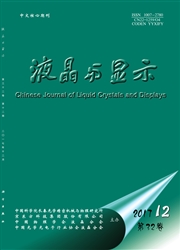

 中文摘要:
中文摘要:
在遥感相机的实际应用中,卫星下传的图像灰度分布往往不佳,针对该问题展开了相关研究。分析了影响卫星下传图像灰度分布的因素,并以遥感相机成像电子学系统的系统参数为基础,给出了3种可行的星上图像背景扣除和灰度拉伸方案;推导了3种方案下获取图像的灰阶丰富程度公式,并确定了最优方案,即采用模拟和数字混合拉伸的办法,对初始量化位数的图像数据进行处理,然后舍掉后若干位,以数传规定位数下传。在实验室条件下,以实际的遥感相机成像系统为依托进行了实验。实验结果表明:文中提出的3种方案均能够实现遥感相机图像的星上背景扣除和灰度拉伸功能;但方案(三)得到的灰阶数量最多,成像效果最好,适合且能够应用于航天遥感相机当中。
 英文摘要:
英文摘要:
In the application of remote sensing cameras,the grayscale distributions of the transferred images are normally bad.In order to solve this problem,some researches are carried out.The factors that affect the grayscale distribution are analyzed,and three methods are proposed for background subtraction and grayscale stretch based on the parameters of remote sensing camera's imaging electronics.The richness of gray levels of the three methods is formulated,and the optimal method is given.That is,analog stretch is implemented together with digital stretch and all the processes are based on the images with original bits of ADC.Then the lowest some bits are abandoned,and the images with the remaining bits are transferred down to earth.The experiments are made based on an actual remote sensing camera's imaging electronics system in laboratory.The results indicate that the proposed three methods can all achieve the functions of background subtraction and grayscale stretch.The third method brings more gray levels to images than the other two,and leads to better imaging quality.Further,it can be applied in the remote sensing cameras.
 同期刊论文项目
同期刊论文项目
 同项目期刊论文
同项目期刊论文
 期刊信息
期刊信息
